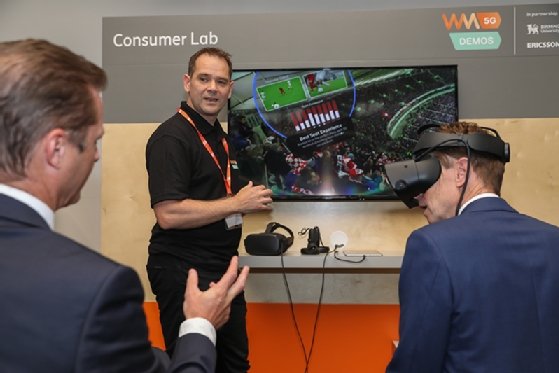
tanaonte - stock.adobe.com
West Midlands gears up for the next phase of 5G
West Midlands 5G (WM5G) marks launch of UK’s first dedicated 5G accelerator programme by holding a series of demos to showcase the wide variety of use cases that exist for the technology
West Midlands 5G (WM5G) has held a series of demos to celebrate the launch of the UK’s first dedicated 5G accelerator programme, which will help businesses to develop services on top of the technology.
The 5G Application Accelerator project is part of WM5G’s ongoing push to accelerate the roll-out of 5G across the West Midlands, and will focus on the potential business applications of the next-generation network technology.
The accelerator officially starts in early 2020, and came about after the West Midlands Combined Authority won a bid in September 2018 to run local 5G pilots as part of the government’s Test Beds and Trials Programme.
The bid focused on trials supporting organisations in the health, construction and automotive sectors to highlight how emerging technology could benefit the local economy and residents’ quality of life.
Speaking at the demo event, which was held in partnership with Birmingham City University and telecommunications giant Ericsson, WM5G chair Igor Leprince said: “The overall plan is to test and launch a certain number of use cases in each of the verticals we’ve defined, and then scale these selected use cases.
“A lot of the applications are out there already, so the question becomes how you make them available at a large scale in the region and in the country,” he said.
5G applications in action
The demos included showing how edge computing could support the functioning of 5G-connected robot arms, virtual reality goggles that allow people to explore new local building developments, and a 5G-linked smart home that uses artificial intelligence (AI) and sensors to update carers on their patients in real-time.
To lay the groundwork for the technology’s proliferation, WM5G has already started running an Infrastructure Accelerator to “get the basics right”.
“We really believe that if you don’t have the basics right, it’s going to be very difficult for operators to roll out 5G and deploy these use cases,” Leprince told Computer Weekly.
A large part of the Application Accelerator’s focus will therefore be on understanding the remaining barriers to industry adoption of 5G.
According to Iain Thornhill, vice-president of service providers and internet of things (IoT) at Ericsson, 5G needs to be made simple if businesses are going to adopt it at scale: “It needs to integrate seamlessly with their existing systems, it needs to be flexible, and it needs to be able to cover multiple use cases across different enterprises and sectors.”
That said, with most of the standardisation already done, 5G is no longer in the research phase, and the the next phase of the roll-out process is to develop appropriate business models, he added.
“The technology has moved on so much now that we can provide the connectivity very quickly, so the question is what the new commercial model is going to be that drives industry,” he said:
“Is industry going to be happy running and operating it themselves, or are they going to work with a partner to do that? It’s the business models rather than the actual technology at this stage.”

WM5G has already been running trials on specific use cases, such as an ultrasound sensor that can be used by clinicians to remotely guide paramedics at the scene of an incident.
“Healthcare is a big question mark and problem in the country, so you can see the potential that 5G has – whether its connected health, the ambulance example – it’s very easy to list 10 use cases and for everyone to understand the impact it will have,” said Leprince.
The remote ultrasound sensor scans were developed by WM5G in collaboration with BT’s mobile operator arm, EE, and University Hospital Birmingham. This case serves to highlight the importance of collaboration in fully unleashing the potential of 5G, said Thornhill.
“We understand that for 5G to move into industry, and for connectivity to become a reality for industry, we need to collaborate,” said Thornhill. “We know that academia also has a very big part to play in that, and we know that industry needs to come and show us their problems so that we can work together to figure out what the future will look like.”
Thornhill added that the low latency and high speed of 5G, even without specific use cases, can bring a “generic improvement over and above the like of Wi-Fi or fixed line connectivity” that can boost productivity and efficiency.
WM5G will be working with an ecosystem of organisations, from large corporates and universities to startups and small to medium-sized enterprises (SMEs), to develop scalable business applications on top of 5G.
Read more about 5G
- Gatwick Airport 5G has gone live at the airport’s South Terminal after Vodafone completed the installation of hundreds of kilometres of fibre.
- European countries are rolling out 5G mobile communications at breakneck speed as they seek to gain a competitive edge over the US and Asia. But some scientists have raised questions about the effects of 5G mobile phone radiation on public health and are calling for a precautionary approach.
- Vodafone has connected three 5G-enabled smartphones to a live network during trials in Spain.








